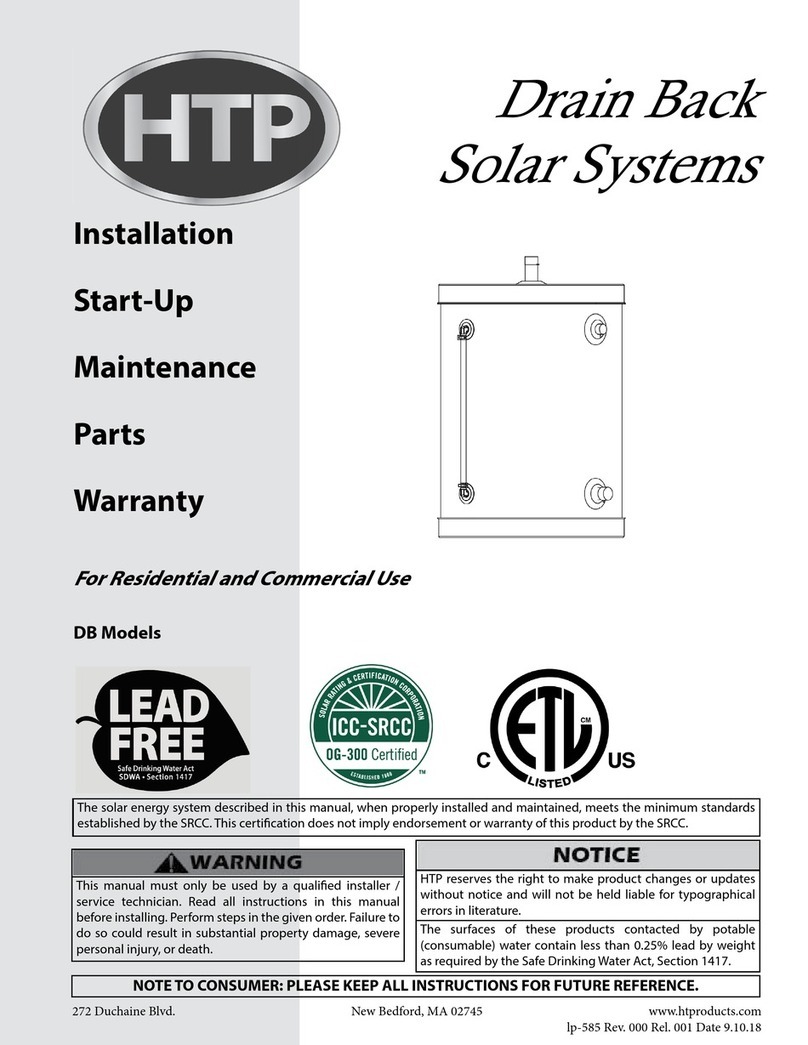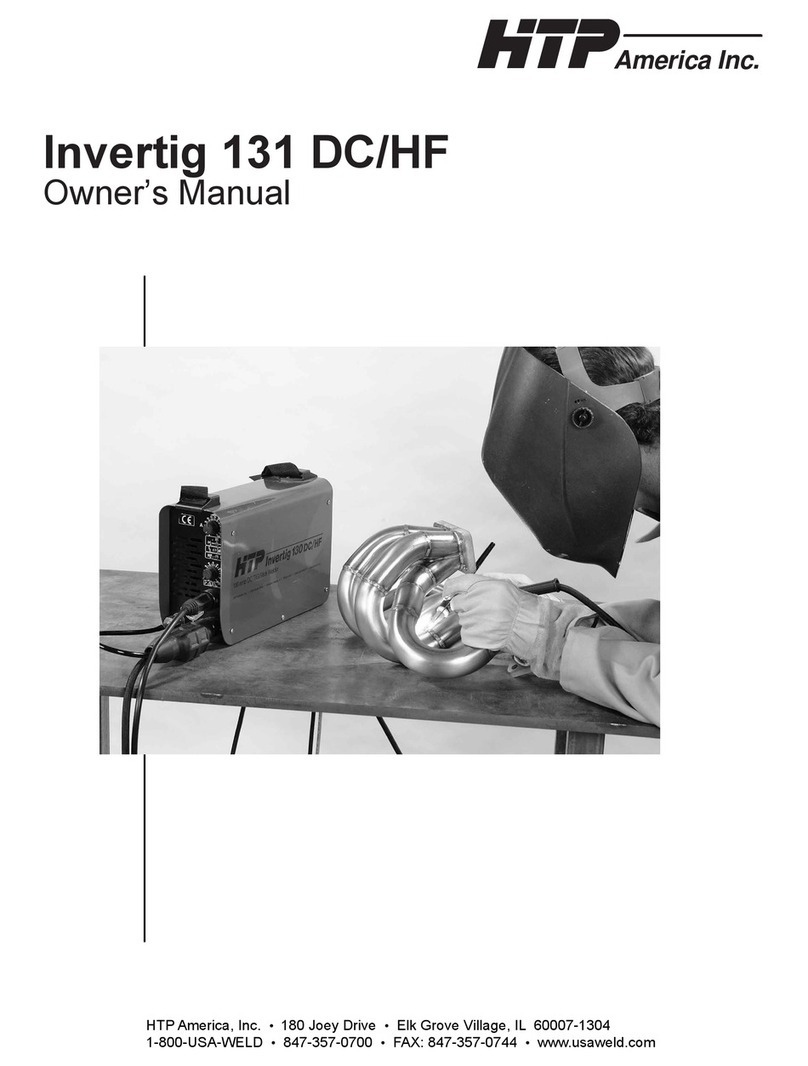We do not recommend using the 4t mode with either the foot
pedal or the torch mounted amperage control.
C. Stick Welding – This mode is used when stick electrode
welding. The electrode will always be hot and the gas solenoid
will not operate.
3) Thermoswitch Indicator Lamp
The thermoswitch indicator lamp will light up yellow when
the duty cycle of your Invertig 130DC/HF has been exceeded.
When this lamp is illuminated, the machine will no longer
weld because the machine has overheated. Leave the machine
plugged in and turned on so the cooling fan can cool the unit
down. Allow the machine to cool for 15 to 30 minutes, the
thermoswitch should reset automatically and your Invertig
will be ready to weld.
4) Power Indicator Lamp
This lamp is illuminated green when the On-Off switch on the
back of your Invertig 130DC/HF is turned on.
5) Touch Start/HF Switch
When the touch start/HF switch is in the HF position, the arc
is initiated by a high frequency pilot arc which allows the arc
to start without bringing the tungsten in contact with the work.
When the foot pedal is depressed, a high frequency arc will
jump from the tungsten to the ground, initiating the arc. This
makes it very easy to start the arc.
When the touch start/HF switch is in the “Lift” position, the arc
is initiated by touching the tungsten to the work and then lifting
it off the work. The lift arc mode allows you to initiate the
welding arc without high frequency. This is important in any
environment where the high frequency arc will cause
interference with sensitive electrical components or computers.
A good example of this would be stainless steel repair in
hospitals.
To TIG Weld using the touch start mode, simply touch the
tungsten to the workpiece, activate the torch trigger or depress
the foot pedal and lift off. When the tungsten breaks contact
with the work, the arc will start.
6) SLOPE DOWN or ARC FORCE
This knob allows you to adjust the slope down time from
0.1 sec to 10 sec where 0 is 0.1 sec and 100 is ten seconds.
This is the amount of time it will take for the welding amperage
to go from the welding amperage to the final current.
NOTE: If you are using a torch mounted remote amperage
control or a foot pedal, it is advisable to set the slope down time
to 0, as you are controlling the slope down manually with your
remote amperage control or foot pedal.
In the stick welding mode, this controls the Arc Force. The arc
force is how “hard” or “soft” the arc is. The minimum setting
(0) produces a softer arc, while the maximum setting (100)
produces a “harder” arc with more “driving” force behind it.
The “harder” arc may produce more spatter.
7) Positive Output Receptacle
When TIG welding, this is where the ground cable connects to
the front of the TIG Adapter. That’s right, we said the ground
cable. This is called straight polarity, with the torch negative
and the work positive.
When Stick Welding Direct Current Electrode Negative
(DCEN), the ground cable will be plugged into the positive
output receptacle. When Stick Welding Direct Current
Electrode Positive (DCEP), the electrode holder will be plugged
into the positive output receptacle.
To install a cable into the positive output receptacle, insert the
male end of the cable into the positive output receptacle and
twist clockwise until snug.
8) 3 Pin Trigger Connection
This connection is used with TIG torches, which have on/off
triggers on the torch. Your Invertig 130DC/HF comes standard
with a footpedal which has the on/off function built into the
pedal, so an on/off trigger on the TIG torch is not necessary.
Therefore, this connection is not used.
9) Gas Output Connection
This is where you connect the gas fitting from the TIG Torch.
The gas output is controlled by the solenoid valve, which is
mounted inside the welder
10) Negative Output Receptacle
When TIG welding, this is where the TIG Torch connects to
your Invertig 130DC/HF Welder. That’s right, we said the TIG
Torch. This is called straight polarity, with the torch negative
and the work positive. When using your Invertig Welder to
TIG weld, all work will be done in straight polarity.
When Stick Welding Direct Current Electrode Negative
(DCEN), the optional electrode holder will be plugged into the
negative output receptacle. When Stick Welding Direct Current
Electrode Positive (DCEP), the ground cable will be plugged
into the negative output receptacle
To install a cable into the negative output receptacle, insert the
male end of the cable into the negative output receptacle and
twist clockwise until snug.






























